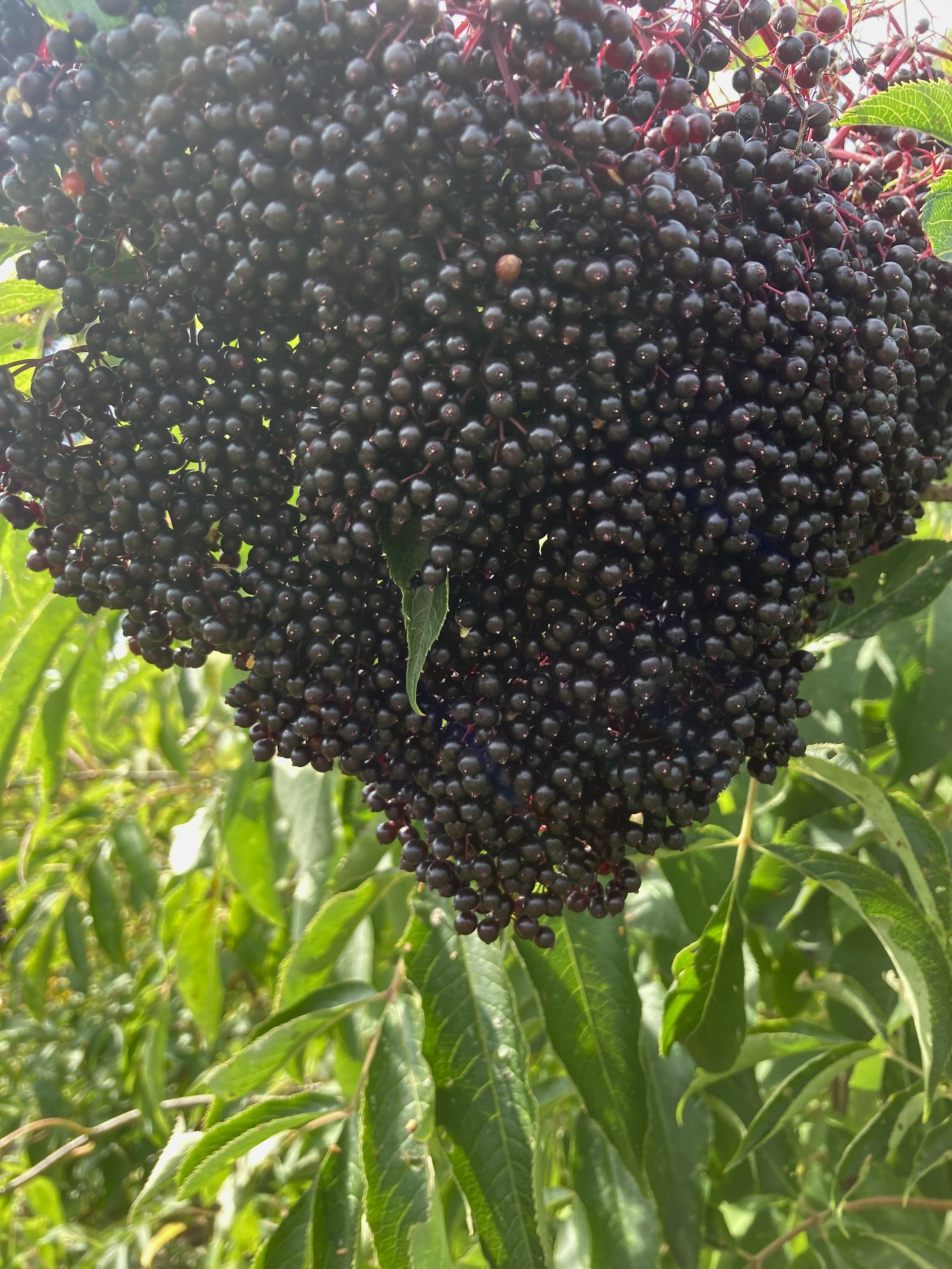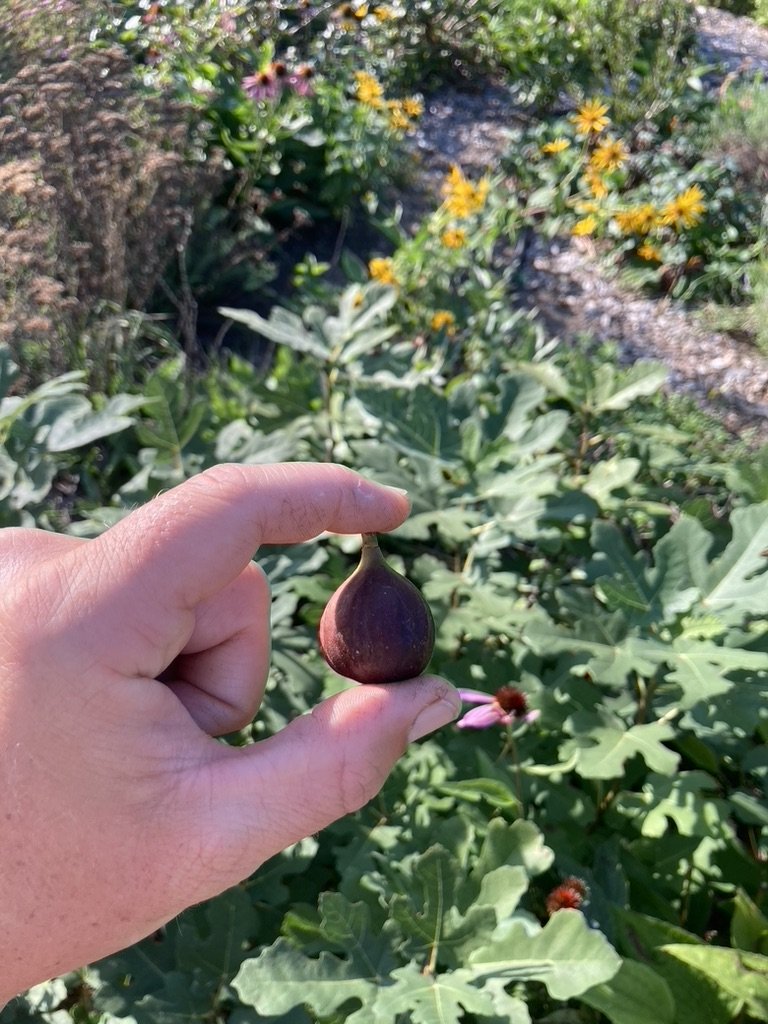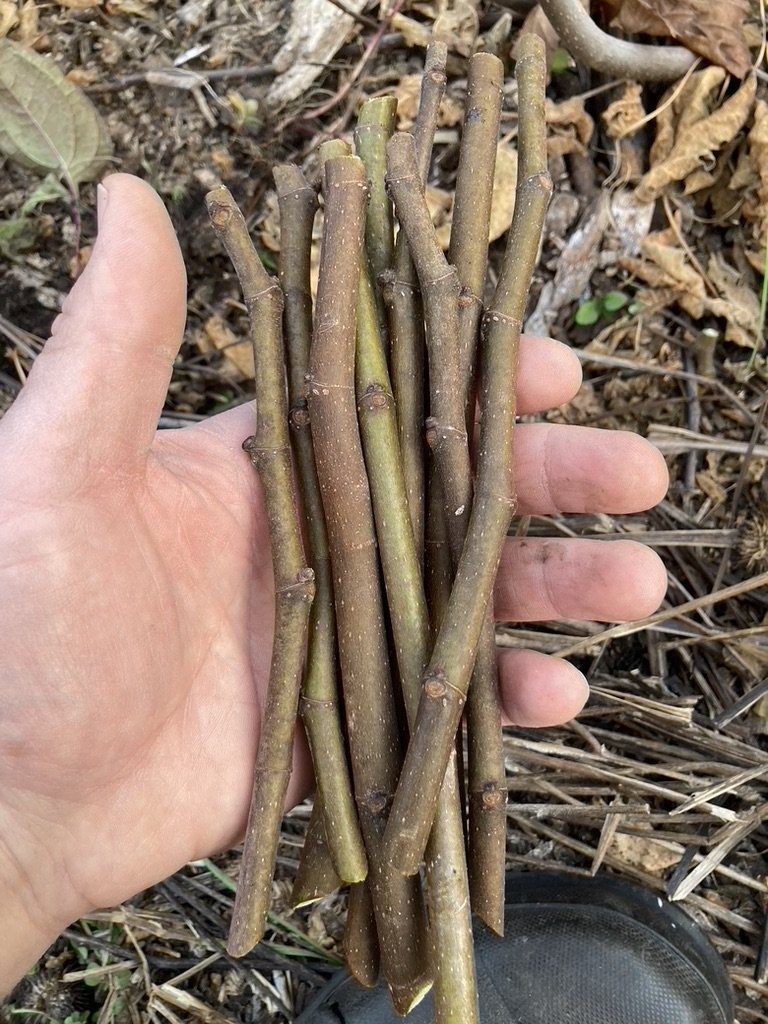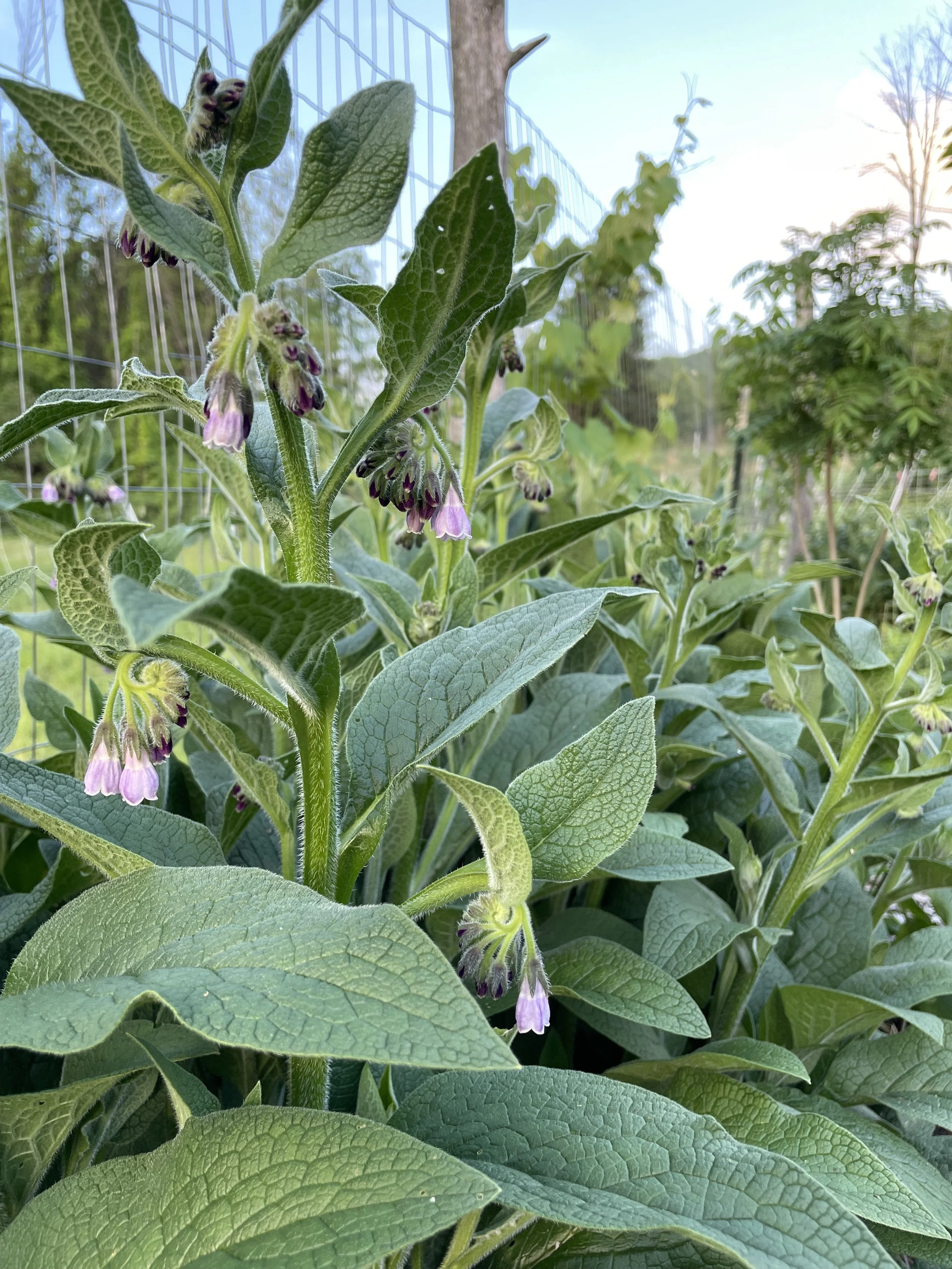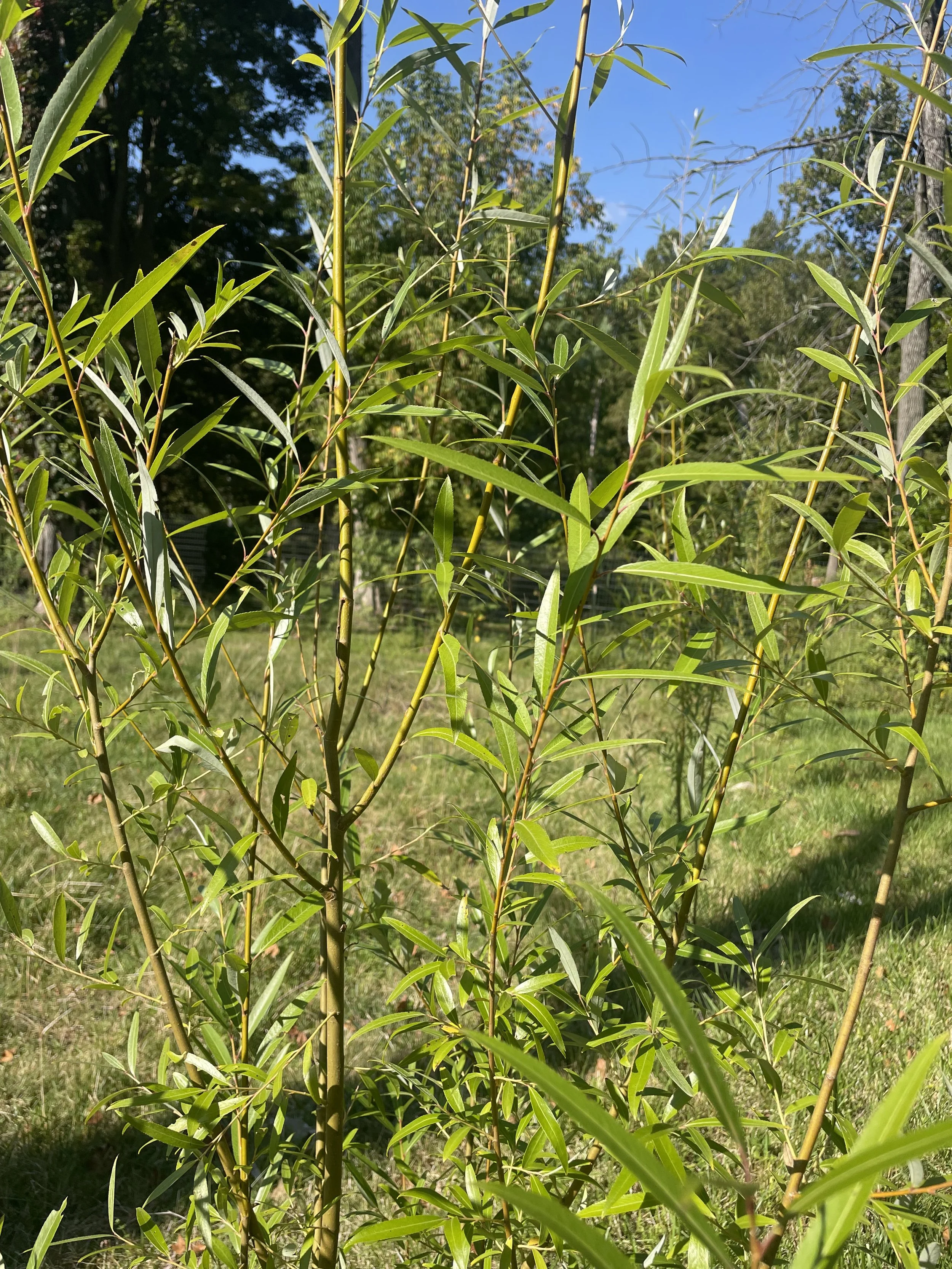 Image 1 of 3
Image 1 of 3

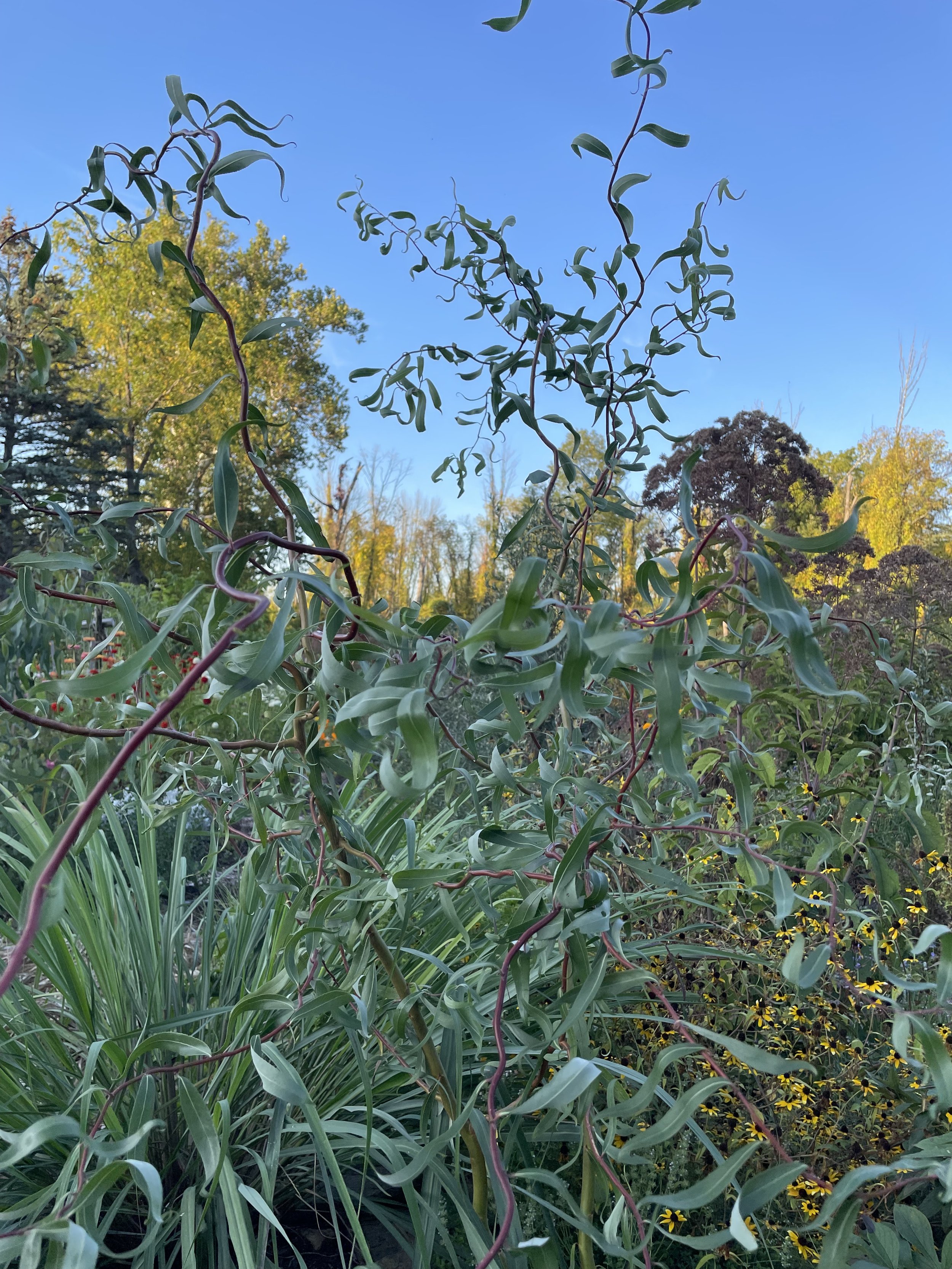 Image 2 of 3
Image 2 of 3

 Image 3 of 3
Image 3 of 3




Willow Cuttings
(Salix spp.)
Willows are among the easiest plants to propagate by cutting. They are fast growing, adaptable, and respond well to coppicing. There many kinds of willows and just as many uses.
Austree Hybrid Willow: Salix matsudana x Salix alba. The fastest growing willow, if not the fastest growing tree you will ever plant! Austree willow is an excellent plant for hedges, windbreaks, soil stability, shade, animal fodder, biomass, and so much more. Although it is extremely vigorous, Austree willow does not sucker or spread by seed, making it a manageable alternative to invasive bamboo. This willow is a fantastic candidate for coppicing, as once established and with adequate moisture, regrowth from the stump can reach as high as 20’ in just 1-2 years.
Corkscrew Willow: Salix matsudana. Green, gnarly, twisting branches on a fast growing tree. Contorted branches make for an excellent specimen tree at full size, or corkscrew willow can be coppiced for consistent harvest of spiraling green branches for decoration.
Scarlet Curls Willow: Salix matsudana. Similar growth to corkscrew willow but with bright red branches. More commonly coppiced, as first year branches are especially crimson red and pop out in floral displays.
Coral Bark ‘Britzensis’ Willow: Salix alba. Straight, crimson red branches with small bluish green leaves. Grows well as a shrub, but can also be coppiced regularly to produce straight crimson rods perfect for weaving.
American Pussy Willow: Salix discolor. A fast growing native plant that can do well in partial shade and along stream edges for stabilization. Known for its fuzzy male catkins in late winter, which are both great for floral displays and provide early season pollen for bees in Feb-March.
Purple Willow: Salix purpurea. Long straight stems are great for baskets and craft projects. Excellent for coppicing; purple-gray branches are fast growing and flexible.
Hardiness zone: Minimum hardiness varies by cultivar but all do well within zones 4-8
Light: Full sun to part shade
Soil: Very adaptable, but prefer moist, fertile soils with pH 5.5-7.5
Mature height: Varies by cultivar.
Spacing: 25’-50’ for full size trees or as close as 2-4’ for a dense hedge, coppiced row, or living fence.
Planting Tips: Willow cuttings are easy to root and do not need rooting hormone as they produce their own! Can be rooted in water, soilless media, or directly in the ground. Keep consistently moist and if starting indoors do not start too early. Willow grows very quickly and should be rooted when it is warm enough to safely plant outdoors. Dormant cuttings can hold in the fridge until ready to start.
We are unable to ship this product outside the contiguous US or to California.
All orders are for Spring 2025 and will be shipped in late March or early April. Cuttings will be shipped dormant.
(Salix spp.)
Willows are among the easiest plants to propagate by cutting. They are fast growing, adaptable, and respond well to coppicing. There many kinds of willows and just as many uses.
Austree Hybrid Willow: Salix matsudana x Salix alba. The fastest growing willow, if not the fastest growing tree you will ever plant! Austree willow is an excellent plant for hedges, windbreaks, soil stability, shade, animal fodder, biomass, and so much more. Although it is extremely vigorous, Austree willow does not sucker or spread by seed, making it a manageable alternative to invasive bamboo. This willow is a fantastic candidate for coppicing, as once established and with adequate moisture, regrowth from the stump can reach as high as 20’ in just 1-2 years.
Corkscrew Willow: Salix matsudana. Green, gnarly, twisting branches on a fast growing tree. Contorted branches make for an excellent specimen tree at full size, or corkscrew willow can be coppiced for consistent harvest of spiraling green branches for decoration.
Scarlet Curls Willow: Salix matsudana. Similar growth to corkscrew willow but with bright red branches. More commonly coppiced, as first year branches are especially crimson red and pop out in floral displays.
Coral Bark ‘Britzensis’ Willow: Salix alba. Straight, crimson red branches with small bluish green leaves. Grows well as a shrub, but can also be coppiced regularly to produce straight crimson rods perfect for weaving.
American Pussy Willow: Salix discolor. A fast growing native plant that can do well in partial shade and along stream edges for stabilization. Known for its fuzzy male catkins in late winter, which are both great for floral displays and provide early season pollen for bees in Feb-March.
Purple Willow: Salix purpurea. Long straight stems are great for baskets and craft projects. Excellent for coppicing; purple-gray branches are fast growing and flexible.
Hardiness zone: Minimum hardiness varies by cultivar but all do well within zones 4-8
Light: Full sun to part shade
Soil: Very adaptable, but prefer moist, fertile soils with pH 5.5-7.5
Mature height: Varies by cultivar.
Spacing: 25’-50’ for full size trees or as close as 2-4’ for a dense hedge, coppiced row, or living fence.
Planting Tips: Willow cuttings are easy to root and do not need rooting hormone as they produce their own! Can be rooted in water, soilless media, or directly in the ground. Keep consistently moist and if starting indoors do not start too early. Willow grows very quickly and should be rooted when it is warm enough to safely plant outdoors. Dormant cuttings can hold in the fridge until ready to start.
We are unable to ship this product outside the contiguous US or to California.
All orders are for Spring 2025 and will be shipped in late March or early April. Cuttings will be shipped dormant.


